Application of Amberlite IRA 402 Resin Adsorption and Laccase Treatment for Acid Blue 113 Removal from Aqueous Media
Abstract
:1. Introduction
2. Materials and Methods
2.1. Chemicals
2.2. Equipment
2.3. Activation of IRA 402 Resin
2.4. Batch Kinetic and Equilibrium Procedures
2.5. Desorption Experiments
2.6. Experiments of Pilot Laboratory Test
2.7. Experiments for Enzymatic Degradation
2.8. Statistical Analysis
3. Results and Discussions
3.1. Ion Exchange Equilibrium of AB 113 Dye onto IRA 402(Cl−)
3.2. Batch Kinetic and Equilibrium Studies
3.3. Batch Adsorption Studies
| Resin | Azo Dye | Qeq (mg/g) | References |
|---|---|---|---|
| Strongly basic anion exchange resin Amberlite IRA-958 | Acid Orange 7 | 1370 | [29] |
| Amberlite IRA-900 (Strongly basic, type 1—N+(CH3)3) | Tartrazine | 57.6 | [30] |
| Amberlite IRA-910 Strongly basic, type 2—N+(CH3)2C2H4OH | 44.6 | ||
| Polystyrene anion-exchange resin SAER | Acid Orange 10 | 670 | [31] |
| Polyacrylic anion-exchange resin AAER | 855 | ||
| Amberlite IRA67 | Acid Orange 7 | 168 | [32] |
| Amberlite IRA-458 | 1211 | ||
| Purolite A-520E | Acid Blue 29 | 321,5 | [33] |
| Amberlite IRA 900 | Reactive Black 5 | 1352 | [34] |
| Amberlite IRA 402(Cl−) | AB 113 | 117 | This study |
3.3.1. Adsorption Isotherm Study
Langmuir Isotherm
Freundlich Isotherm
3.4. Desorption Studies
3.5. Pilot Laboratory Experiment
3.6. Enzymatic Bio-Degradation of the AB 113 Dye
3.7. TG Analysis of AB 113 Dye
3.8. FTIR Spectroscopy Results
4. Conclusions
Supplementary Materials
Author Contributions
Funding
Institutional Review Board Statement
Informed Consent Statement
Data Availability Statement
Conflicts of Interest
References
- Katheresan, V.; Kansedo, J.; Lau, S.Y. Efficiency of various recent wastewater dye removal methods: A review. J. Environ. Chem. Eng. 2018, 6, 4676–4697. [Google Scholar] [CrossRef]
- De Gisi, S.G.; Lofrano, M.; Grassi, M.N. Characteristics and adsorption capacities of low-cost sorbents for wastewater treatment: A review. Sustain. Mater. Technol. 2016, 9, 10–40. [Google Scholar] [CrossRef] [Green Version]
- Mojsov, K.D.; Andronikov, D.; Janevski, A.; Kuzelov, A.; Gaber, S. The application of enzymes for the removal of dyes from textile effluents. Adv. Technol. 2016, 5, 81–86. [Google Scholar] [CrossRef] [Green Version]
- Nguyen, T.A.; Juang, R.-S. Treatment of waters and wastewaters containing sulfur dyes: A review. Chem. Eng. J. 2013, 219, 109–117. [Google Scholar] [CrossRef]
- Robinson, T.; McMullan, G.; Marchant, R.; Nigam, P. Remediation of dyes in textile effluent: A critical review on current treatment technologies with a proposed alternative. Bioresour. Technol. 2001, 77, 247–255. [Google Scholar] [CrossRef]
- Yagub, M.T.; Sen, T.K.; Afroze, S.; Ang, H.M. Dye and its removal from aqueous solution by adsorption: A review. Adv. Colloid Interface Sci. 2014, 209, 172–184. [Google Scholar] [CrossRef] [PubMed]
- Zeng, G.; Ye, Z.; He, Y.; Yang, X.; Ma, J.; Shi, H.; Feng, Z. Application of dopamine-modified halloysite nanotubes/PVDF blend membranes for direct dyes removal from wastewater. Chem. Eng. J. 2017, 323, 572–583. [Google Scholar] [CrossRef]
- Kant, R. Textile dyeing industry an environmental hazard. Sci. Res. 2012, 4, 22–26. [Google Scholar] [CrossRef] [Green Version]
- Forgacs, E.; Cserhati, T.; Oros, G. Removal of synthetic dyes from wastewaters: A review. Environ. Int. 2004, 30, 953–971. [Google Scholar] [CrossRef]
- Joshi, M.; Bansal, R.; Purwar, R. Colour removal from textile effluents. Indian J. Fibre Text. Res. 2004, 29, 239–259. [Google Scholar]
- Peng, Y.; Zhang, Y.; Huang, H.; Zhong, C. Flexibility induced high-performance MOF-based adsorbent for nitroimidazole antibiotics capture. Chem. Eng. J. 2018, 333, 678–685. [Google Scholar] [CrossRef]
- Montoya-Suarez, S.; Colpas-Castillo, F.; Meza-Fuentes, E.; Rodríguez-Ruiz, J.; Fernandez-Maestre, R. Activated carbons from waste of oil-palm kernel shells, sawdust and tannery leather scraps and application to chromium (VI), phenol, and methylene blue dye adsorption. Water Sci. Technol. 2016, 73, 21–27. [Google Scholar] [CrossRef] [PubMed]
- Liu, L.; Zhang, J.; Tan, Y.; Jiang, Y.; Hu, M.; Li, S.; Zhai, Q. Rapid decolorization of anthraquinone and triphenylmethane dye using chloroperoxidase: Catalytic mechanism, analysis of products and degradation route. Chem. Eng. J. 2014, 244, 9–18. [Google Scholar] [CrossRef]
- Wang, Z.; Xue, M.; Huang, K.; Liu, Z. Textile dyeing wastewater treatment. Adv. Treat. Text. Effl. 2011, 5, 91–116. [Google Scholar]
- Marin, N.M.; Pascu, L.F.; Demba, A.; Nita-Lazar, M.; Badea, I.A.; Aboul-Enein, H. Removal of the Acid Orange 10 by ion exchange and microbiological methods. Int. J. Environ. Sci. Technol. 2019, 16, 6357–6366. [Google Scholar] [CrossRef]
- Marin, N.M.; Tiron, O.; Pascu, L.F.; Costache, M.; Nita-Lazar, M.; Badea, I.A. Synergistic methodology based on ion exchange and biodegradation mechanisms applied for metal complex dye removal from waste waters. Rev. Chim. 2018, 69, 38–44. [Google Scholar] [CrossRef]
- Helfferich, F.G. Ion Exchange; Dover Publications Inc.: New York, NY, USA, 1995. [Google Scholar]
- Golden, I.E.; Wilson, I.D. (Eds.) Encyclopedia of Separation Science; Academic Press: Amsterdam, The Netherlands, 2000; pp. 3172–3179. ISBN 9780122267703. [Google Scholar] [CrossRef]
- Acikara, Ö.B. Ion exchange chromatography and its applications. Column Chromatogr. 2013, 10, 55744. [Google Scholar]
- Cyganowski, P.; Dzimitrowicz, A. A Mini-Review on Anion Exchange and Chelating Polymers for Applications in Hydrometallurgy, Environmental Protection, and Biomedicine. Polymers 2020, 12, 784. [Google Scholar] [CrossRef] [Green Version]
- Polska-Adach, E.; Wawrzkiewicz, M.; Hubicki, Z. Removal of acid, direct and reactive dyes on thepolyacrylic anion exchanger. Physicochem. Probl. Miner. Process. 2019, 55, 1496–1508. [Google Scholar]
- Rashed, M.N. Adsorption technique for the removal of organic pollutants from water and wastewater. Org. Pollut.-Monit. Risk Treat. 2013, 7, 167–194. [Google Scholar]
- Sinha, S.; Behera, S.; Das, S.; Basu, A.; Mohapatra, R.; Murmu, B.; Dhal, N.; Tripathy, S.; Parhi, P. Removal of Congo Red dye from aqueous solution using Amberlite IRA-400 in batch and fixed bed reactors. Chem. Eng. Commun. 2018, 205, 432–444. [Google Scholar] [CrossRef]
- Bulgariu, D.; Nacu, G.; Măluan, T.; Bulgariu, L. Kinetic study of lead (II) removal from aqueous solution onto lignin-based materials. Cellul. Chem. Technol. 2016, 50, 339–347. [Google Scholar]
- Shirzad-Siboni, M.; Jafari, S.J.; Giahi, O.; Kim, I.; Lee, S.-M.; Yang, J.-K. Removal of acid blue 113 and reactive black 5 dye from aqueous solutions by activated red mud. J. Ind. Eng. Chem. 2014, 20, 1432–1437. [Google Scholar] [CrossRef]
- Jain, S.N.; Gogate, P.R. Acid Blue 113 removal from aqueous solution using novel biosorbent based on NaOH treated and surfactant modified fallen leaves of Prunus Dulcis. J. Environ. Chem. Eng. 2017, 5, 3384–3394. [Google Scholar] [CrossRef]
- Lee, L.Y.; Gan, S.; Tan, M.S.Y.; Lim, S.S.; Lee, X.J.; Lam, Y.F. Effective removal of Acid Blue 113 dye using overripe Cucumis sativus peel as an eco-friendly biosorbent from agricultural residue. J. Clean. Prod. 2016, 113, 194–203. [Google Scholar] [CrossRef]
- Gupta, V.K.; Gupta, B.; Rastogi, A.; Agarwal, S.; Nayak, A. A comparative investigation on adsorption performances of mesoporous activated carbon prepared from waste rubber tire and activated carbon for a hazardous azo dye—Acid Blue 113. J. Hazard. Mater. 2011, 186, 891–901. [Google Scholar] [CrossRef] [PubMed]
- Greluk, M.; Hubicki, Z. Efficient removal of Acid Orange 7 dye from water using the strongly basic anion exchange resin Amberlite IRA-958. Desalination 2011, 278, 219–226. [Google Scholar] [CrossRef]
- Wawrzkiewicz, M.; Hubicki, Z. Removal of tartrazine from aqueous solutions by strongly basic polystyrene anion exchange resins. J. Hazard. Mater. 2009, 164, 502–509. [Google Scholar] [CrossRef]
- Zhu, Z.; Zhang, M.; Liu, F.; Shuang, C.; Zhu, C.; Zhang, Y.; Li, A. Effect of polymeric matrix on the adsorption of reactive dye by anion-exchange resins. J. Taiwan Inst. Chem. Eng. 2016, 62, 98–103. [Google Scholar] [CrossRef]
- Greluk, M.; Hubicki, Z. Comparison of the gel anion exchangers for removal of Acid Orange 7 from aqueous solution. Chem. Eng. J. 2011, 170, 184–193. [Google Scholar] [CrossRef]
- Wawrzkiewicz, M.; Hubicki, Z. Equilibrium and kinetic studies on the sorption of acidic dye by macroporous anion exchanger. Chem. Eng. J. 2010, 157, 29–34. [Google Scholar] [CrossRef]
- Greluk, M.; Hubicki, Z. Evaluation of polystyrene anion exchange resin for removal of reactive dyes from aqueous solutions. Chem. Eng. Res. Des. 2013, 91, 1343–1351. [Google Scholar] [CrossRef]
- Yang, K.; Xing, J.; Xu, P.; Chang, J.; Zhang, Q.; Usman, K.M. Activated Carbon Microsphere from Sodium Lignosulfonate for Cr(VI) Adsorption Evaluation in Wastewater Treatment. Polymers 2020, 12, 236. [Google Scholar] [CrossRef] [Green Version]
- Kumar, S.V. Adsorption kinetics and isotherms for the removal of rhodamine B dye and Pb + 2 ions from aqueous solutions by a hybrid ion-exchanger. Arab. J. Chem. 2019, 12, 316–329. [Google Scholar]
- Ozturk, G.; Silah, H. Adsorptive Removal of Remazol Brilliant Blue R from water by using a macroporous polystyrene resin: Isotherm and kinetic studies. Environ. Process. 2020, 7, 479–492. [Google Scholar] [CrossRef]
- Khan, M.A.; Siddiqui, M.R.; Otero, M.; Alshareef, S.A.; Rafatullah, M. Removal of Rhodamine B from Water Using a Solvent Impregnated Polymeric Dowex 5WX8 Resin: Statistical Optimization and Batch Adsorption Studies. Polymers 2020, 12, 500. [Google Scholar] [CrossRef] [Green Version]
- Patel, H. Review on solvent desorption study from exhausted adsorbent. J. Saudi Chem. Soc. 2021, 25, 101302. [Google Scholar] [CrossRef]
- Terangpi, P.; Chakraborty, S. Adsorption kinetics and equilibrium studies for removal of acid azo dyes by aniline formaldehyde condensate. Appl. Water Sci. 2017, 7, 3661–3671. [Google Scholar] [CrossRef] [Green Version]
- Tanaka, H.; Chikuma, M.; Harada, A.; Ueda, T.; Yube, S. A new chelate-forming resin with dithizone functional group prepared by the conversion of an anion-exchange resin. Talanta 1976, 23, 489–491. [Google Scholar] [CrossRef]
- Jia, Y.; Ding, L.; Ren, P.; Zhong, M.; Ma, J.; Fan, X. Performances and Mechanism of Methyl Orange and Congo Red Adsorbed on the Magnetic Ion-Exchange Resin. J. Chem. Eng. Data 2020, 65, 725–736. [Google Scholar] [CrossRef]
- Marin, N.M.; Dinu, L.; Stanculescu, I.; Cristea, N.I.; Ionescu, A.I. Maize Stalk Material for On-Site Treatment of Highly Polluted Leachate and Mine Wastewater. Materials 2021, 14, 956. [Google Scholar] [CrossRef] [PubMed]
- Awasthi, A.; Datta, D. Application of Amberlite XAD-7HP resin impregnated with Aliquat 336 for the removal of Reactive Blue-13 dye: Batch and fixed-bed column studies. J. Environ. Chem. Eng. 2019, 7, 103502. [Google Scholar] [CrossRef]
- Leulescu, M.; Rotaru, A.; Pălărie, I.; Moanţă, A.; Cioateră, N.; Popescu, M.; Morîntale, E.; Bubulică, M.V.; Florian, G.; Hărăbor, A.; et al. Tartrazine: Physical, thermal and biophysical properties of the most widely employed synthetic yellow food-colouring azo dye. J. Therm. Anal. Calorim. 2018, 134, 209–231. [Google Scholar] [CrossRef]
- Stanculescu, I.; Mandravel, C.; Landy, D.; Woisel, P.; Surpateanu, G. Complexation of tetrandrine with calcium ion probed by various spectroscopic methods and molecular modeling. J. Mol. Struct. 2003, 655, 81–87. [Google Scholar] [CrossRef]
- Jachuła, J.; Hubicki, Z. Removal of Cr(VI) and As(V) ions from aqueous solutions by polyacrylate and polystyrene anion exchange resins. Appl. Water Sci. 2013, 3, 653–664. [Google Scholar] [CrossRef] [Green Version]
- Liu, W.; Zhang, Y.; Wang, S.; Bai, L.; Deng, Y.; Tao, J. Effect of Pore Size Distribution and Amination on Adsorption Capacities of Polymeric Adsorbents. Molecules 2021, 26, 5267. [Google Scholar] [CrossRef]
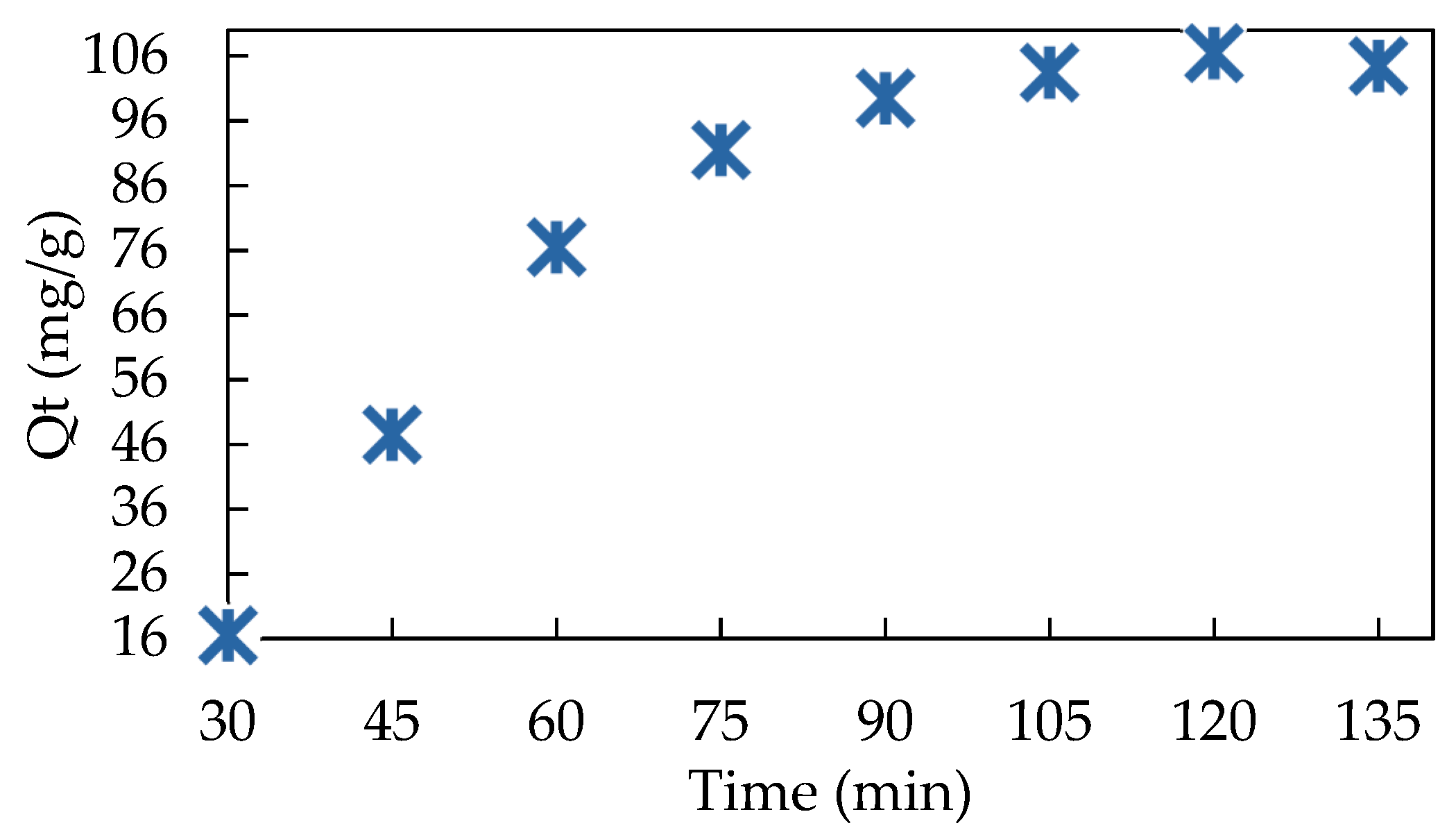


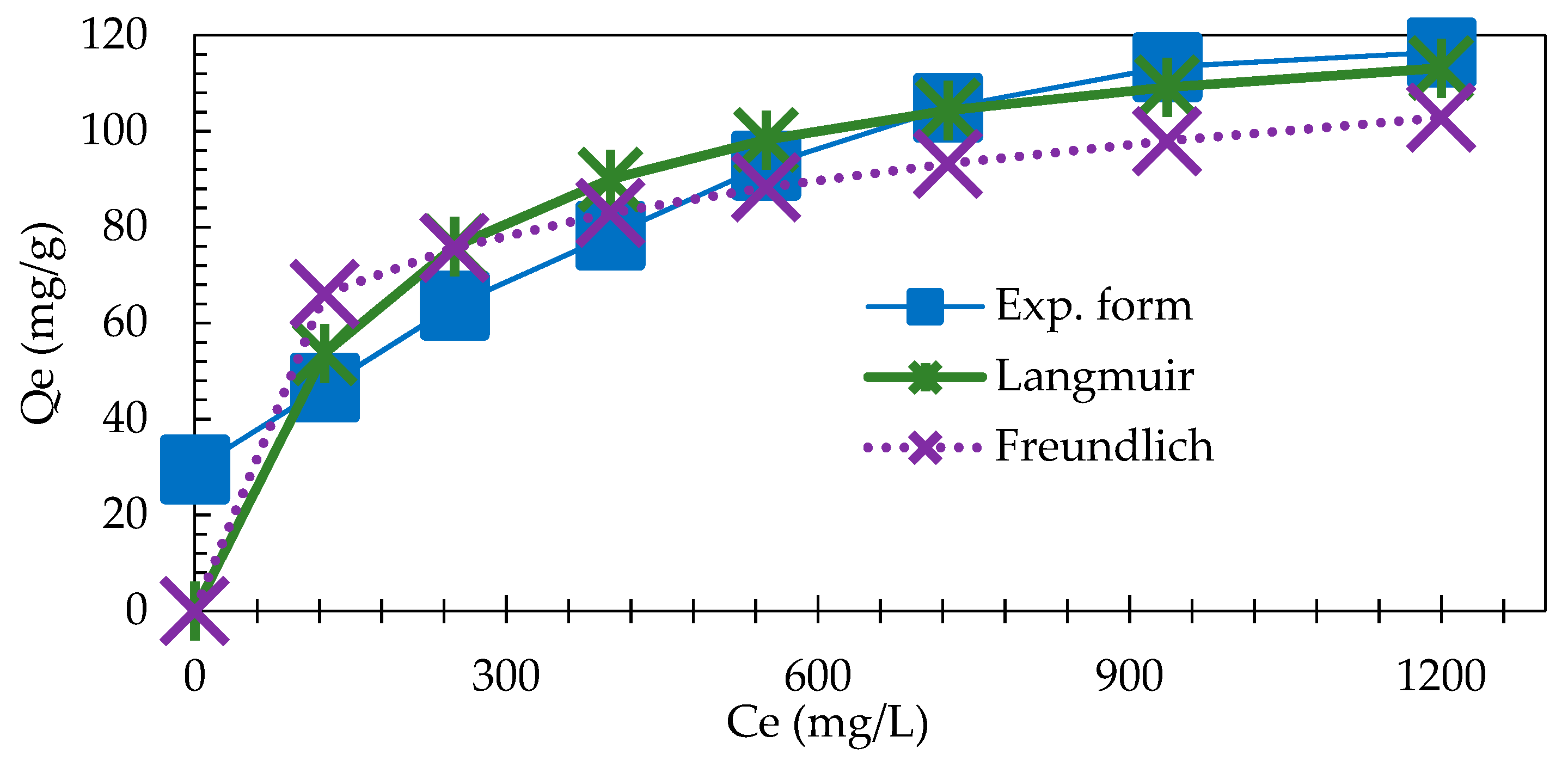

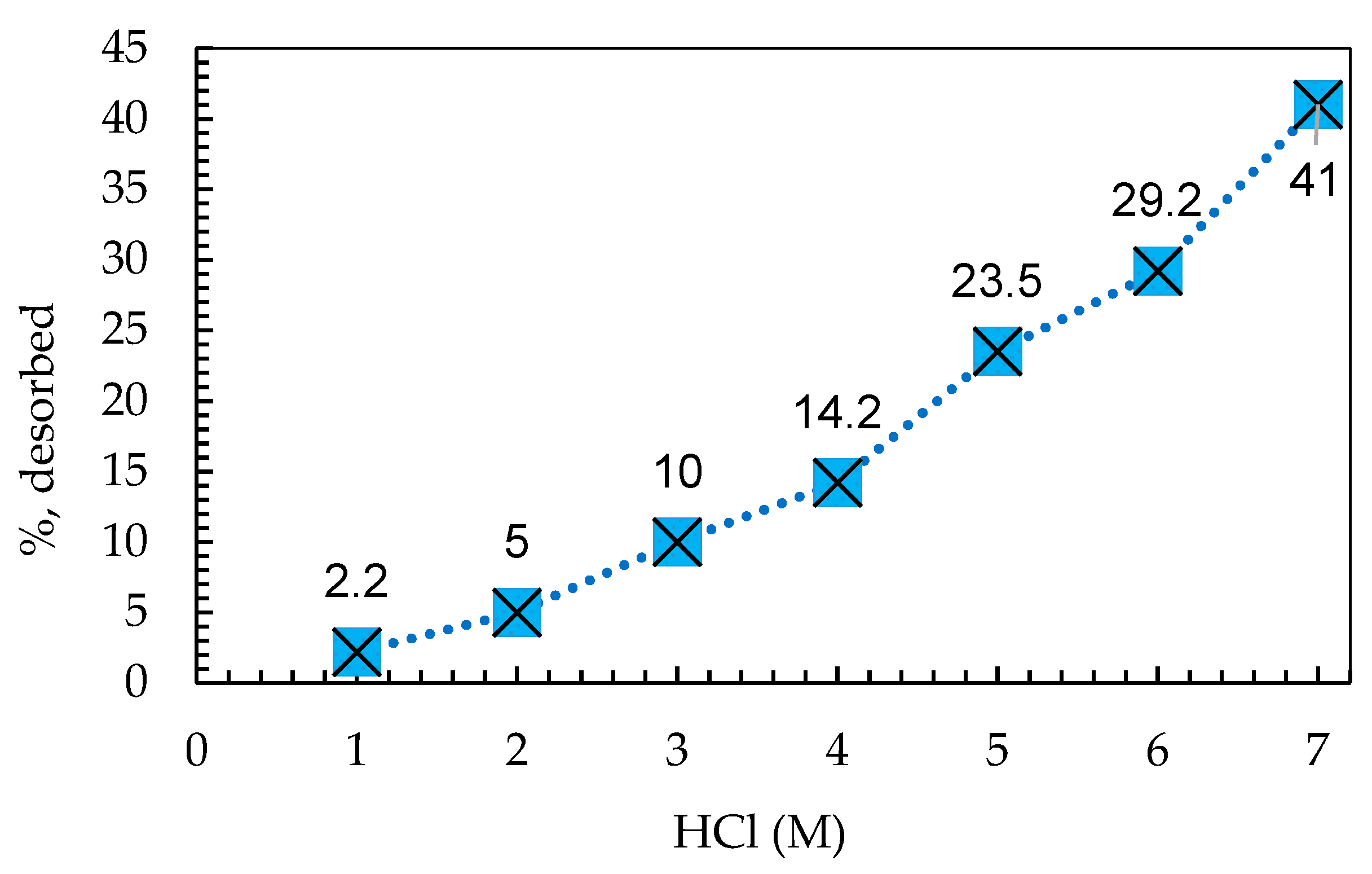


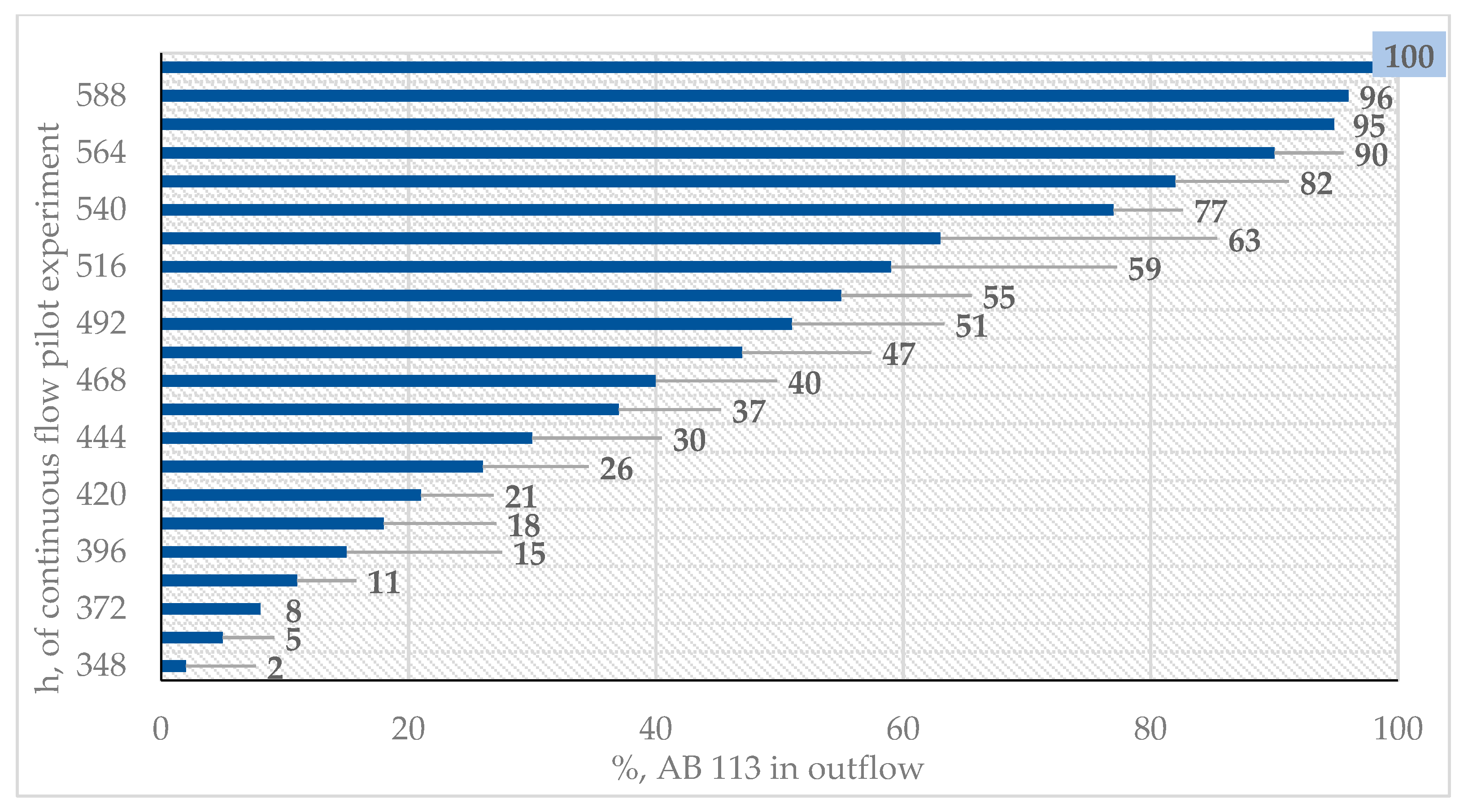

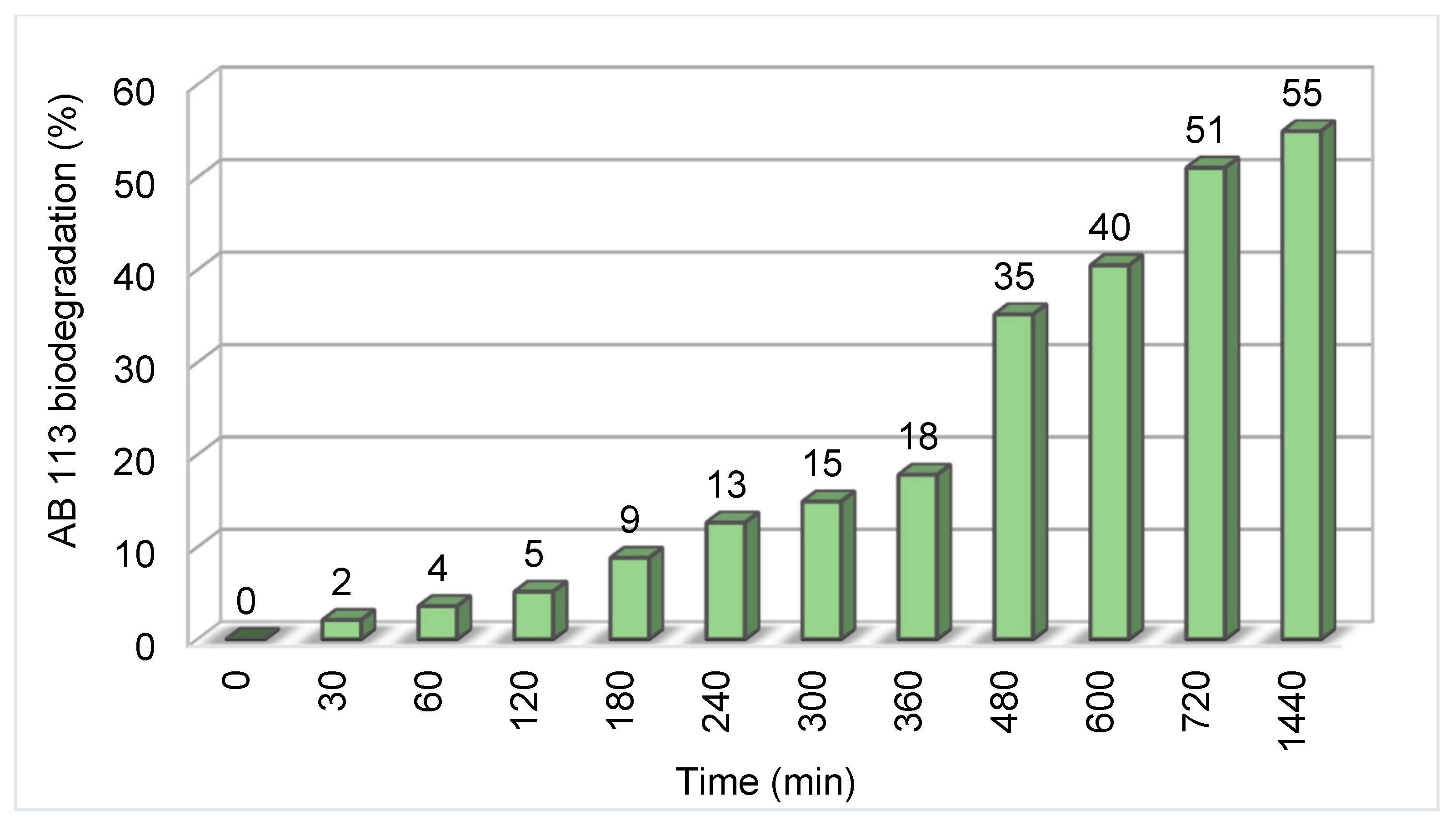
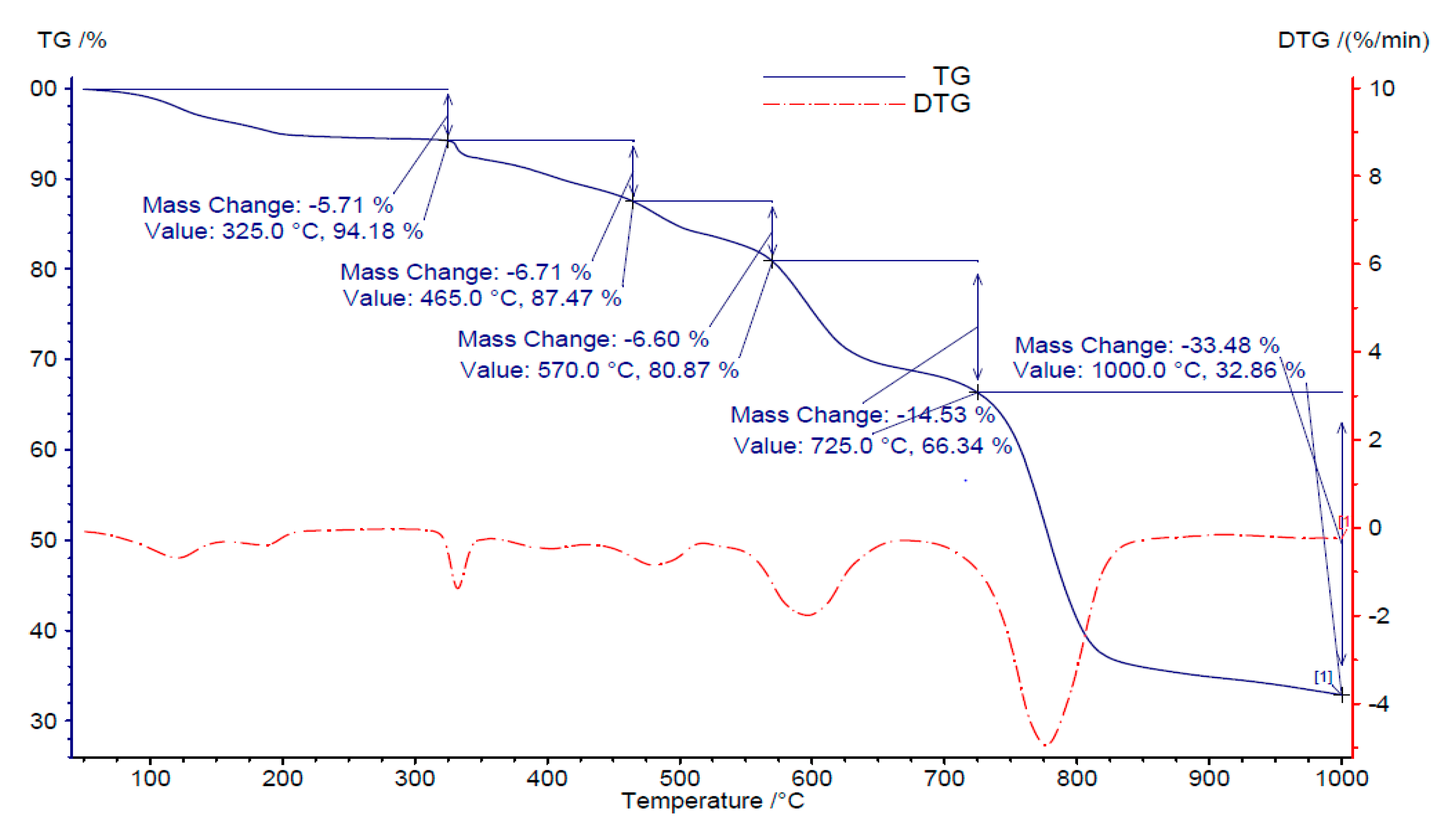
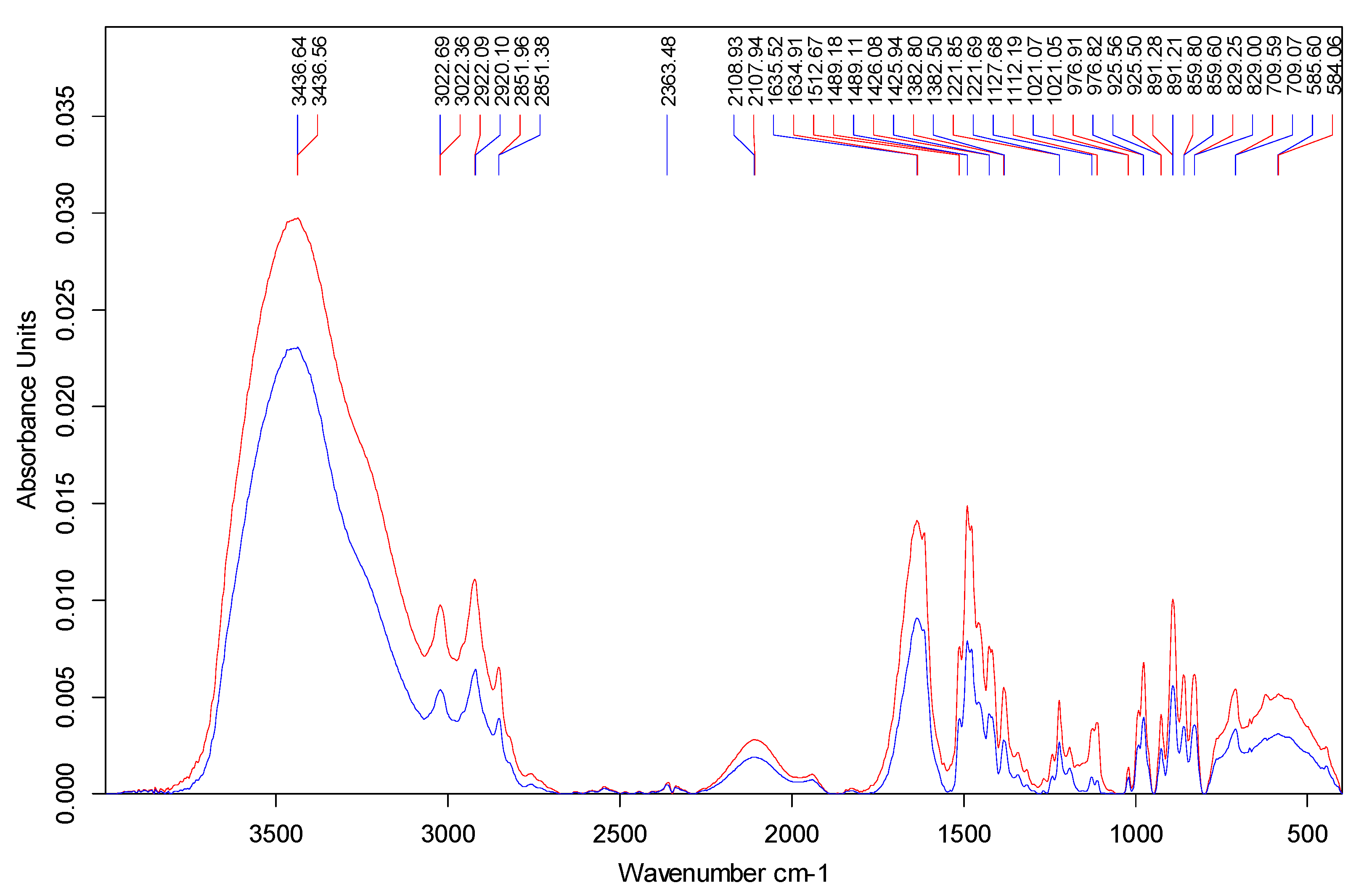
| Lagergren Model (PFO) | K1 (min−1) | Qt (mg/g) | R2 |
| 0.02 | 162.7 | 0.9275 | |
| Morris–Weber Model First stage Second stage | Kid (min−1) | C | |
| 24 | 114 | 0.9918 | |
| 2.59 | 76.1 | 0.6504 | |
| Pseudo Second Order (PSO) Model | K2 g/(mg min) | Qt (mg/g) | |
| Type 1 | 0.0300 | 626 | 0.0300 |
| Type 2 | 0.0001 | 0.8577 | |
| Type 3 | 0.0007 | 27.9 | 0.1563 |
| Type 4 | 0.0446 | 0.07 | 0.1563 |
| Langmuir Isotherm Model | Freundlich Isotherm Model | ||||||
|---|---|---|---|---|---|---|---|
| T (°C) | Qm (mg/g) | b (L/mg) | R2 | Kf (mg/g) | n | R2 | |
| 25 ± 2 | 130 | 0.01 | 0.9575 | 25.7 | 5.12 | 0.20 | 0.8614 |
Publisher’s Note: MDPI stays neutral with regard to jurisdictional claims in published maps and institutional affiliations. |
© 2021 by the authors. Licensee MDPI, Basel, Switzerland. This article is an open access article distributed under the terms and conditions of the Creative Commons Attribution (CC BY) license (https://creativecommons.org/licenses/by/4.0/).
Share and Cite
Marin, N.M.; Stanculescu, I. Application of Amberlite IRA 402 Resin Adsorption and Laccase Treatment for Acid Blue 113 Removal from Aqueous Media. Polymers 2021, 13, 3991. https://doi.org/10.3390/polym13223991
Marin NM, Stanculescu I. Application of Amberlite IRA 402 Resin Adsorption and Laccase Treatment for Acid Blue 113 Removal from Aqueous Media. Polymers. 2021; 13(22):3991. https://doi.org/10.3390/polym13223991
Chicago/Turabian StyleMarin, Nicoleta Mirela, and Ioana Stanculescu. 2021. "Application of Amberlite IRA 402 Resin Adsorption and Laccase Treatment for Acid Blue 113 Removal from Aqueous Media" Polymers 13, no. 22: 3991. https://doi.org/10.3390/polym13223991
APA StyleMarin, N. M., & Stanculescu, I. (2021). Application of Amberlite IRA 402 Resin Adsorption and Laccase Treatment for Acid Blue 113 Removal from Aqueous Media. Polymers, 13(22), 3991. https://doi.org/10.3390/polym13223991








